Score breakdown
Things we like
- Eye-catching design
- Cabin design is minimalist, modern and properly opulent
- Decent dynamics and 440km range
- Swift and silent EV performance
Not so much
- You could buy two top-spec Kia Carnivals for the same money
- Too many functions buried in central screen + no Android Auto
- Some interior fit and finish pretty average
- Shorter warranty period than petrol versions of the Mifa
You probably haven’t heard much about the LDV Mifa 9. That’s because when it launched in Australia late last year, most of the spotlight was nicked by its sister vehicle the LDV eT60 – which made national headlines as Australia’s first electric dual-cab ute.
That’s a shame because unlike the eT60, which is overpriced, under-specced and undercooked to drive, the Mifa 9 is far more convincing. For starters, this electric people-mover rides on a fresh platform, and it’s powered by the latest version of LDV’s battery and e-motor tech.
It’s not only interesting to look at (anyone else picking up strong Storm Trooper vibes around the nose?), but it ushers in a new cabin design that’s fresh, minimalist and, in the more expensive versions, feels properly opulent and spacious.
Before you start thinking about trading in your tatty diesel-powered Kia Carnival, however, there’s a catch – the price tag. At $106,000 for the cheapest version and $131,000 for the desirable flagship, the Mifa 9 isn’t only priced outside the realm of most family buyers but it’s actually twice as expensive as a top-spec Carnival.
So is it still worth considering? Or should you only continue reading if you’re the fleet manager for a chauffeur company or a large hotel chain looking to exploit some tax concessions? We snagged a quick drive to find out.
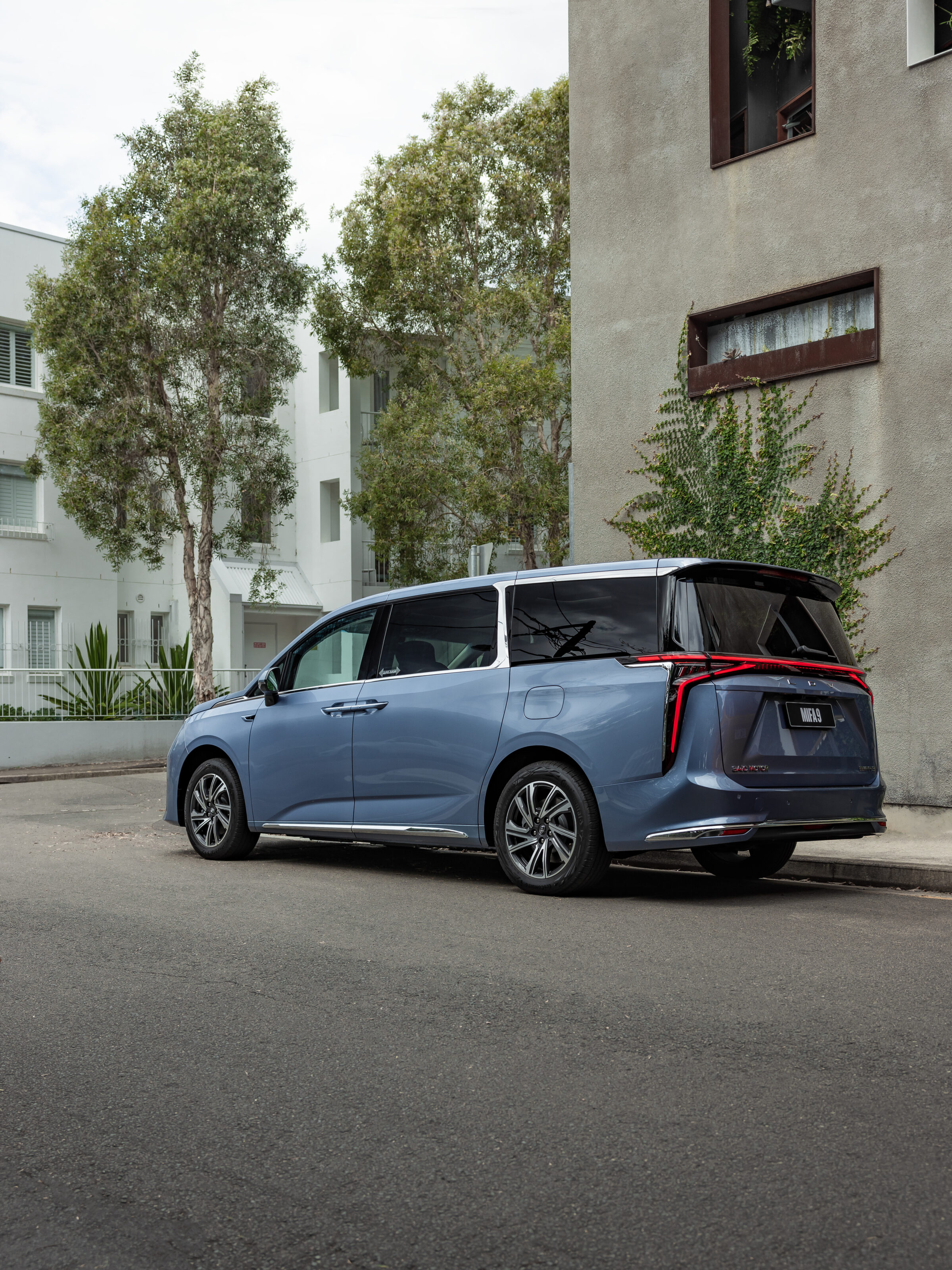
JUMP AHEAD
- How much is it, and what do you get?
- How do rivals compare on value?
- Interior comfort, space and storage
- What is it like to drive?
- How efficient is it?
- How safe is it?
- Warranty and running costs
- VERDICT
- Specifications
How much is it, and what do you get?
We’ve already mentioned the Mifa 9’s high price, but let’s pull the Band-Aid off fully, shall we?
Three trim levels are offered: the Mode ($106,000), Executive ($117,000) and the flagship Luxe ($131,000) with those prices being before on-road costs. Need some context? LDV also sells petrol-powered versions of the Mifa people mover and spec-for-spec, the EV is more than $50,000 dearer. Ouch.
| 2023 Mifa 9 Executive: The basics | |
|---|---|
| Body | 5-door, 7-seat people mover |
| Drive | front-wheel |
| Battery/motor | 90kWh lithium-ion/ 1 x front axle |
| Transmission | single-speed reduction gear |
| Power | 180kW |
| Torque | 350Nm |
| Fuel consumption (combined) | 21.5kW/100km |
| Range | 430km (WLTP) |
| Charging speed | 120kWh max |
| Charging time | 36 minutes for 30-80% (DC fast charging) / 8.5 hours for 5-100% (11kW AC charging) |
| Boot space (3rd row/2nd row/all flat) | 466/1703/2017L |
| Price | $117,000 + on-road costs |
The silver lining to the high pricing is that you do score a lot of space and a lot of equipment for your cash.
Size-wise, the Mifa 9 measures in at almost 5.3 metres long (making it bigger than a Mercedes-Maybach GLS) and the list of standard equipment is equally enormous.
Every Mifa 9 arrives armed with 18-inch alloy wheels, smart key entry, LED headlights, wired Apple CarPlay, a large 12.3-inch infotainment system, a 7.0-inch digital instrument cluster, adaptive cruise control, blind-spot monitoring and lane departure/warning systems.
Also standard across the range is the same electric powertrain with all three trim levels utilising a 90kWh battery pack that feeds a single e-motor on the front axle. Outputs are healthy at 180kW/350Nm and the range and recharging times are pretty impressive.
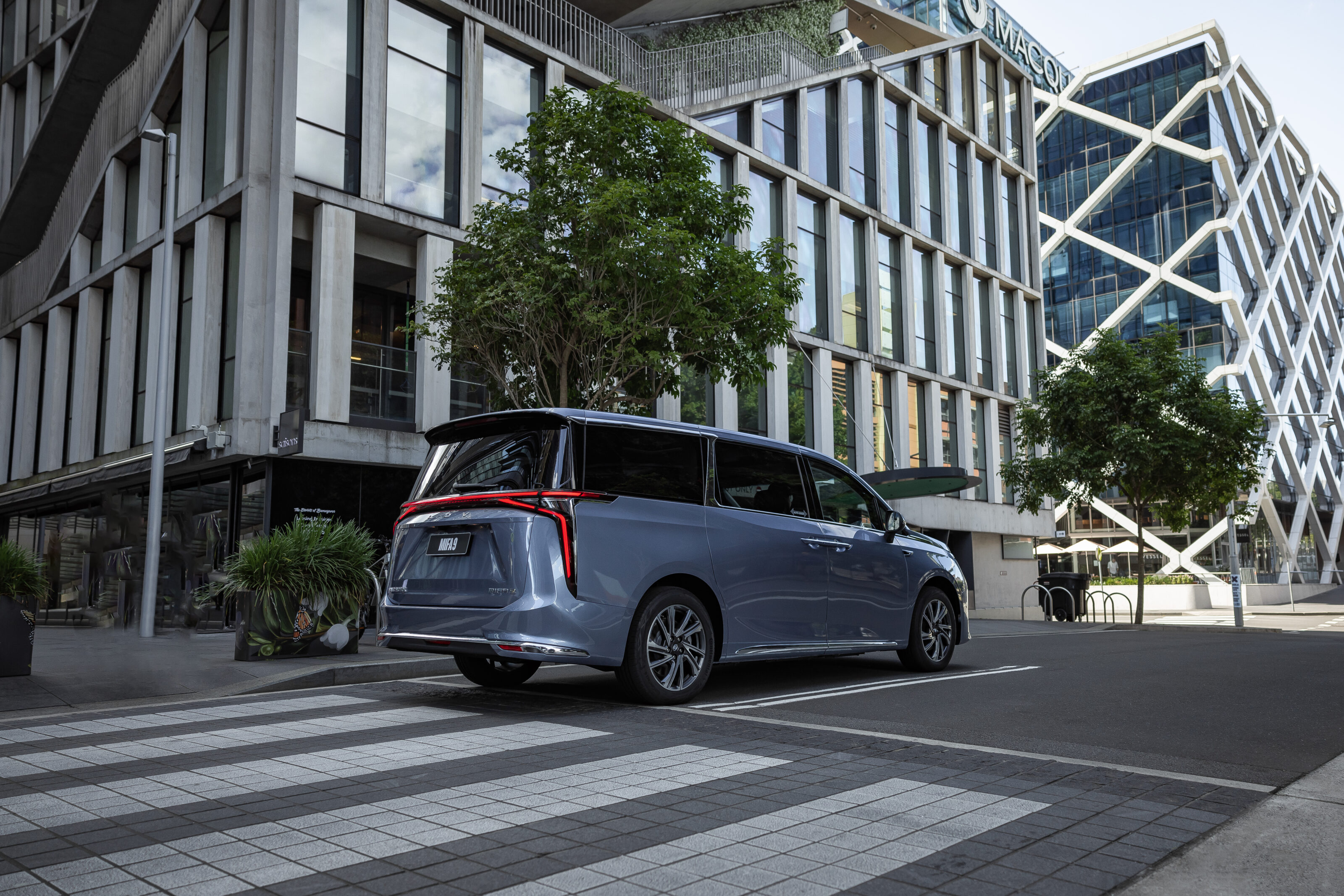
On a full charge, LDV says the Mode trim level can travel 440km while the Executive and Luxe have slightly shorter ranges (430 and 420km respectively) due to their richer spec levels and greater weight.
To our minds, the mid-spec Executive is the grade to buy. For $117,000 before on-road costs it adds a number of additional goodies over the Mode including larger 19-inch alloys, an eight-speaker audio system, adaptive LED headlights, front parking sensors, 360 surround-view cameras, an electric tailgate, front and rear glass sunroof, automatic windows, additional charging sockets, a wireless charging pad and rear privacy glass.
It also replaces the Mode’s plastic steering wheel with a leather-trimmed one and adds electrically adjustable seats in the first two rows.
The flagship Luxe commands a further $14,000 premium over the Executive and adds a 12-speaker sound system, a heated steering wheel and full leather seats that are heated, ventilated, and offer a massage function in the front two rows.
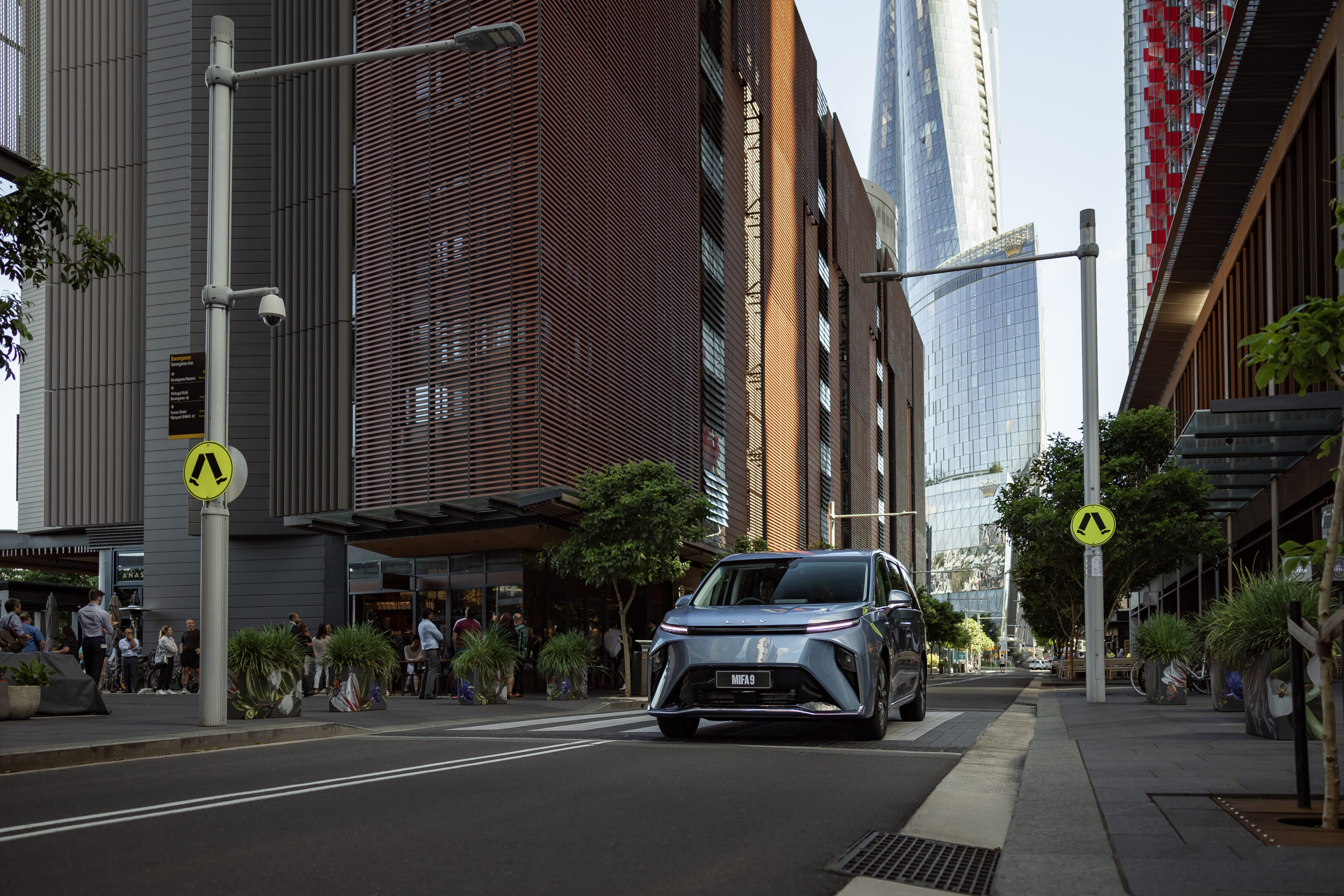
Its piece de resistance, however, is the addition of two reclining ‘captains chairs’ in the second row that look and feel like business class seats stolen from an Airbus A380. As well as being able to heat, cool and massage you, the Captain’s chairs feature an extendable footrest, fold-out tray tables and individual touchscreen control panels in the armrest of each seat.
Six colours are available across the range including Blanc White, Pearl White, Mica Blue and Metal Black but the most arresting hues are a pair of two-tone finishes for Executive and Luxe models that combine ‘Snow Cyan’ or ‘Concrete Grey’ with a black roof. Word of warning, though: these ‘premium paint’ finishes carry an additional $2000 charge.
As for what’s missing? Well there’s no head-up display, no Android Auto and no native sat-nav system. You also miss out on a spare tyre due to batteries occupying the space beneath the boot floor.
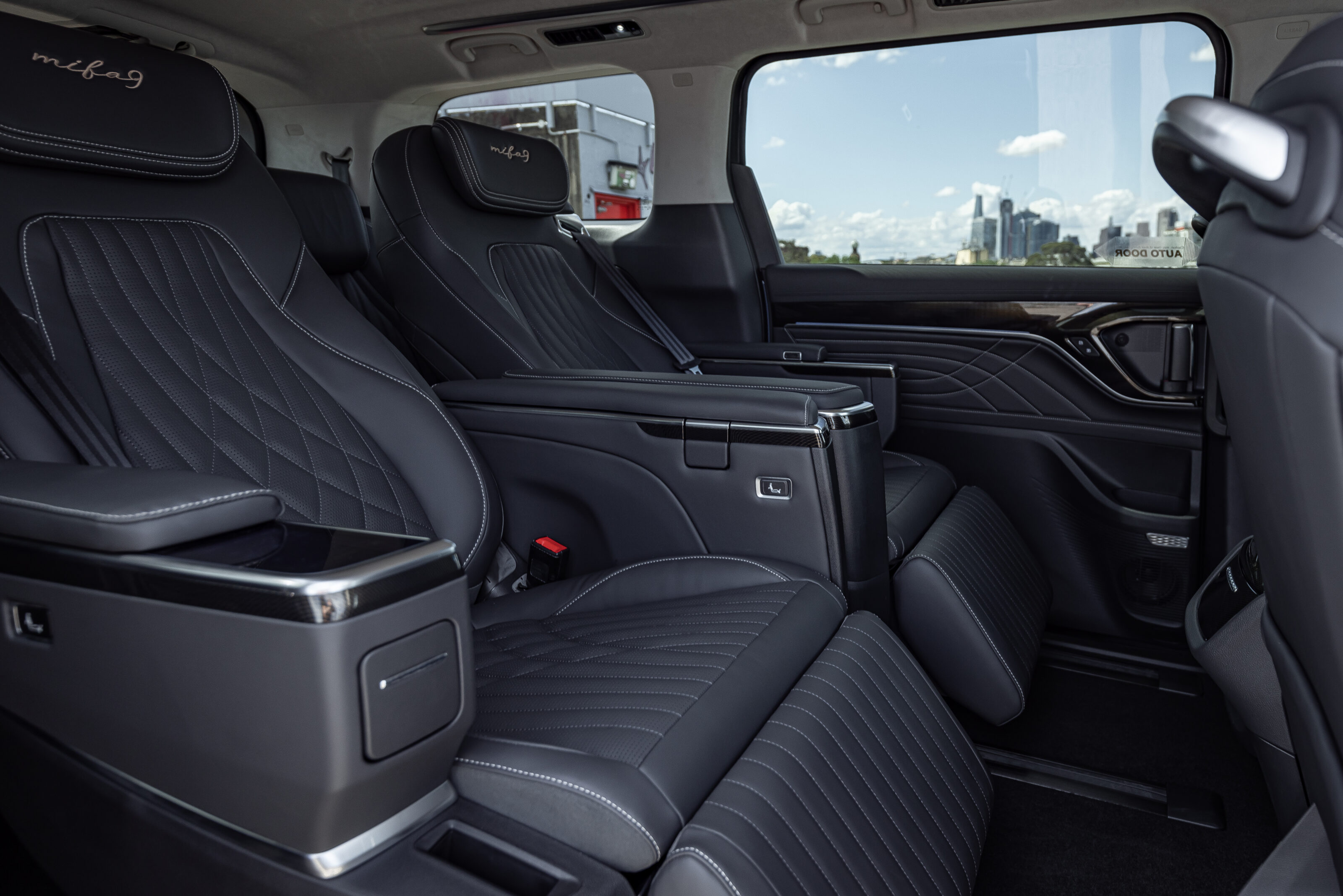
How do rivals compare on value?
It’s slim pickings in the world of electric people movers right now.
The only other company to offer something similar to the LDV Mifa 9 is Mercedes-Benz which has two options to choose from: the eVito Tourer which is priced at $116,115 before on-road costs and is essentially a commercial van with seats and carpet, or the closely related EQV which has a stronger passenger-car focus.
The EQV is based on the diesel V-Class van and is available as a single variant, the EQV 300, which retails for $155,338 before on-road costs; $24,338 more expensive than the flagship Mifa 9 Luxe. Like the LDV, the Mercedes is powered by a 90kWh battery pack but it offers less performance due to outputs of 150kW/365Nm which is 30kW down on the Mifa 9.
Battery range in the EQV is also shorter (363km versus 440km in the LDV) and the Merc’s suite of active safety systems isn’t quite as extensive due to a lack of rear-cross traffic alert and traffic sign recognition.
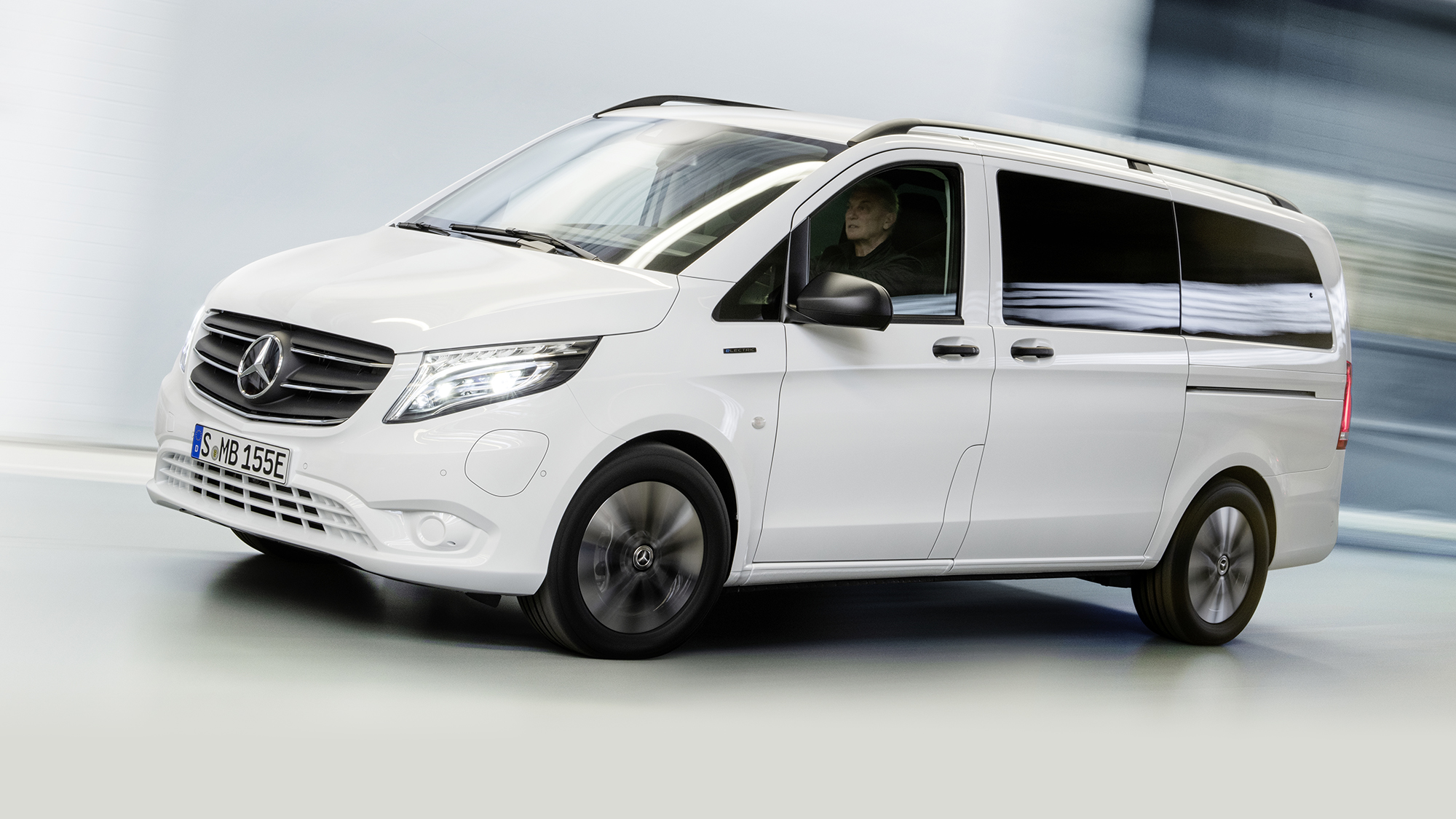
Charge times are similar between the pair, although the EQV 300 does hold a slight advantage and can achieve a 10-80 per cent top-up in 45 minutes on a DC fast charger. LDV claims the Mifa 9 can go from 30-80 per cent in 36 minutes, so it’s not exactly apples with apples.
Where the Mercedes should gazump the LDV, however, is ride comfort thanks to its standard inclusion of air suspension with adaptive dampers. Resale is also likely to be stronger with the Mercedes.
As for other electrified vehicles that can ferry about seven people, the Mercedes EQB is another option worth considering. It starts at $87,800 before on-road costs for the front-drive EQB 250 but it can’t match the Mifa 9 for passenger room or luggage space.
If an electric powertrain isn’t a ‘must have’, then there’s a host of established mainstream people movers worth test driving, too. The Kia Carnival is our pick of the bunch (a flagship Platinum is $65,580 before on-road costs) but there’s also the Hyundai Staria and Volkswagen Caddy to consider.
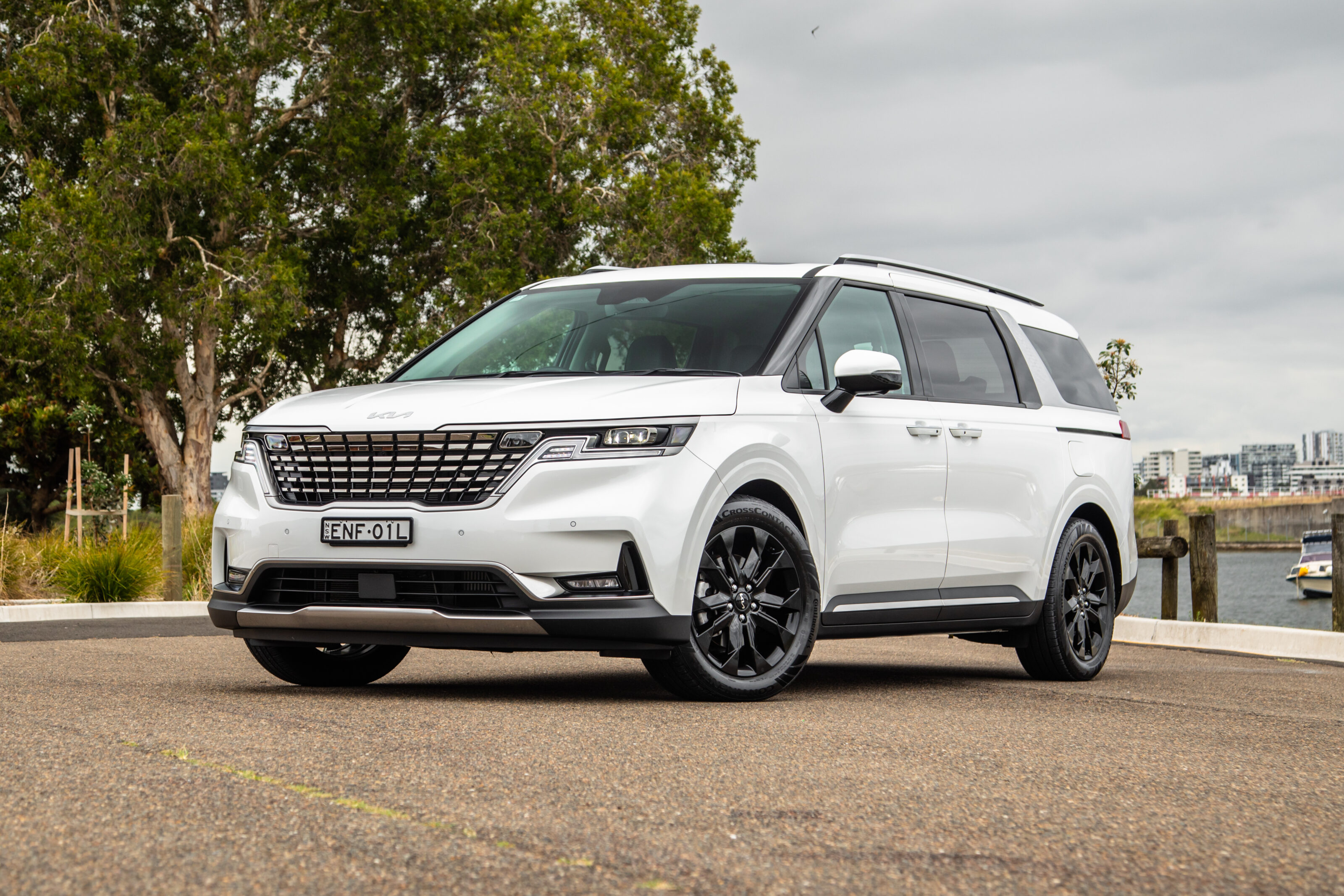
Interior comfort, space and storage
As you’d expect given its size and family focus, cabin space is a clear strength for the Mifa 9.
What might come as a surprise, however, is just how premium it feels in here. LDV only had a mid-spec Executive model for us to test, so we can’t comment on the ambience of the entry-level Mode but we were pleasantly surprised by our Mifa 9’s cabin.
The design is modern and minimal, the leatherette-trimmed seats are comfortable and supportive and there’s ample reach and rake adjustment from the steering wheel so the driving position is pretty much bang on. Cabin storage is as generous as you’d hope, too, thanks to twin cup holders, roomy door pockets and a cavernous cubby lurking below the floating centre console.
Measuring 7.0-inches, the digital dial cluster offers clear graphics but it’s the centre screen on the dashboard through which you control most of the car’s functions.
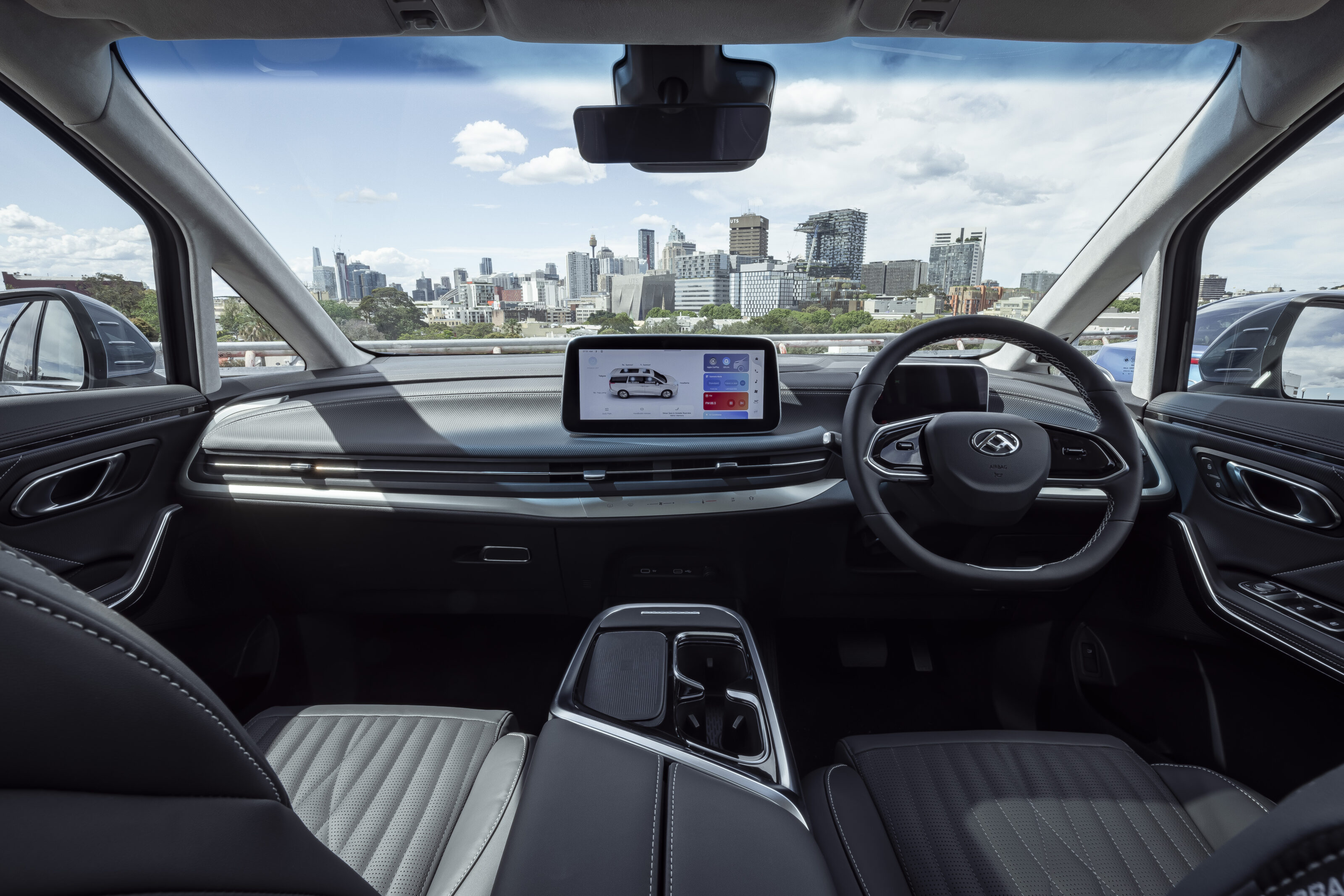
Buttons are few and far between in the Mifa 9, meaning you’ll have to dive into the centre screen for most things. This isn’t exactly user-friendly but one cool feature is using the screen to open and close individual windows. At least the screen has a high resolution and the menu structure is easy to navigate.
Plus, LDV has kept some of the key controls for the air-con out of the screen and placed them on a silver horizontal strip below, which you operate via touch-sensitive sliders. It’s a bit fiddly to use and annoyingly the silver piece of trim was crooked on our test car. Still, the general mix of materials and fit and finish was of a high quality.
An eight-seat layout will join the model range soon but for now, every Mifa 9 features a 2-2-3 seating configuration that makes getting into the third row a breeze thanks to a decent gap between the second-row seats. Of all the seats in the Mifa 9, it’s the second row that’s arguably the most desirable.
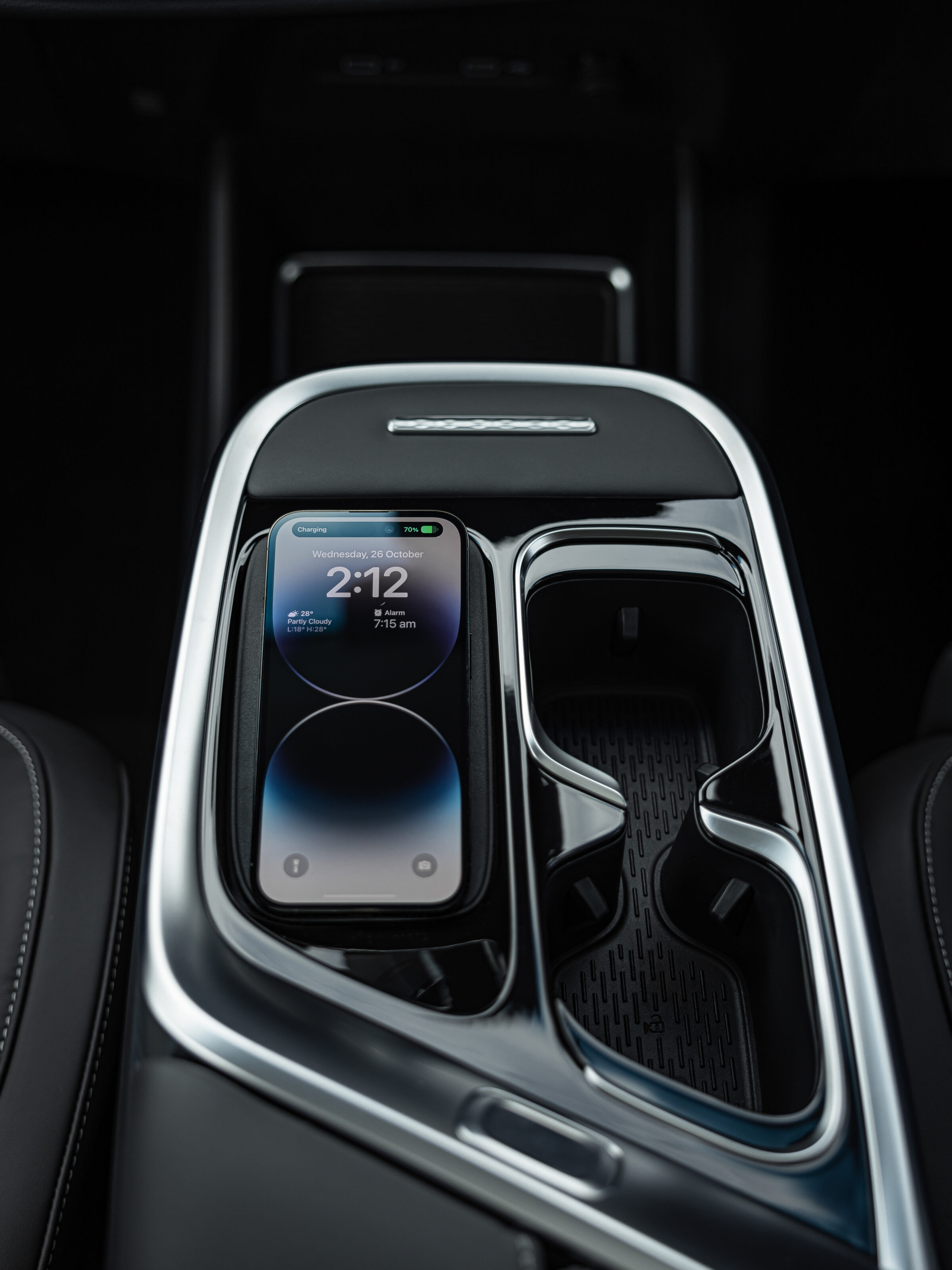
The seats themselves are deeply cushioned and comfortable, there’s ample knee room and the ambience feels light and airy thanks to the large sunroof and low window sills. The third row is less spacious but the backrest reclines and the seat itself is on rails which allows you to vary passenger room with luggage space.
Speaking of, there’s oodles of room for bags. With all three rows in use, there’s 466L of luggage space but if you drop the third row that number grows to 1703L. With both back rows tucked away, the Mifa 9 offers a colossal 2017L of luggage room.
If you plan to lug about lots of people and their bags on a regular basis however and let’s face it most owners probably will, it’s important to be mindful of the Mifa 9’s reduced payload. Adding a heavy battery pack into the floor has boosted the Mifa 9’s kerb weight to a chunky 2535kg in the top-spec Luxe variant. That extra heft has reduced the payload to 525kg meaning that if you plan to fill every seat, you have a load limit of 75kg per passenger. Inclusive of luggage.
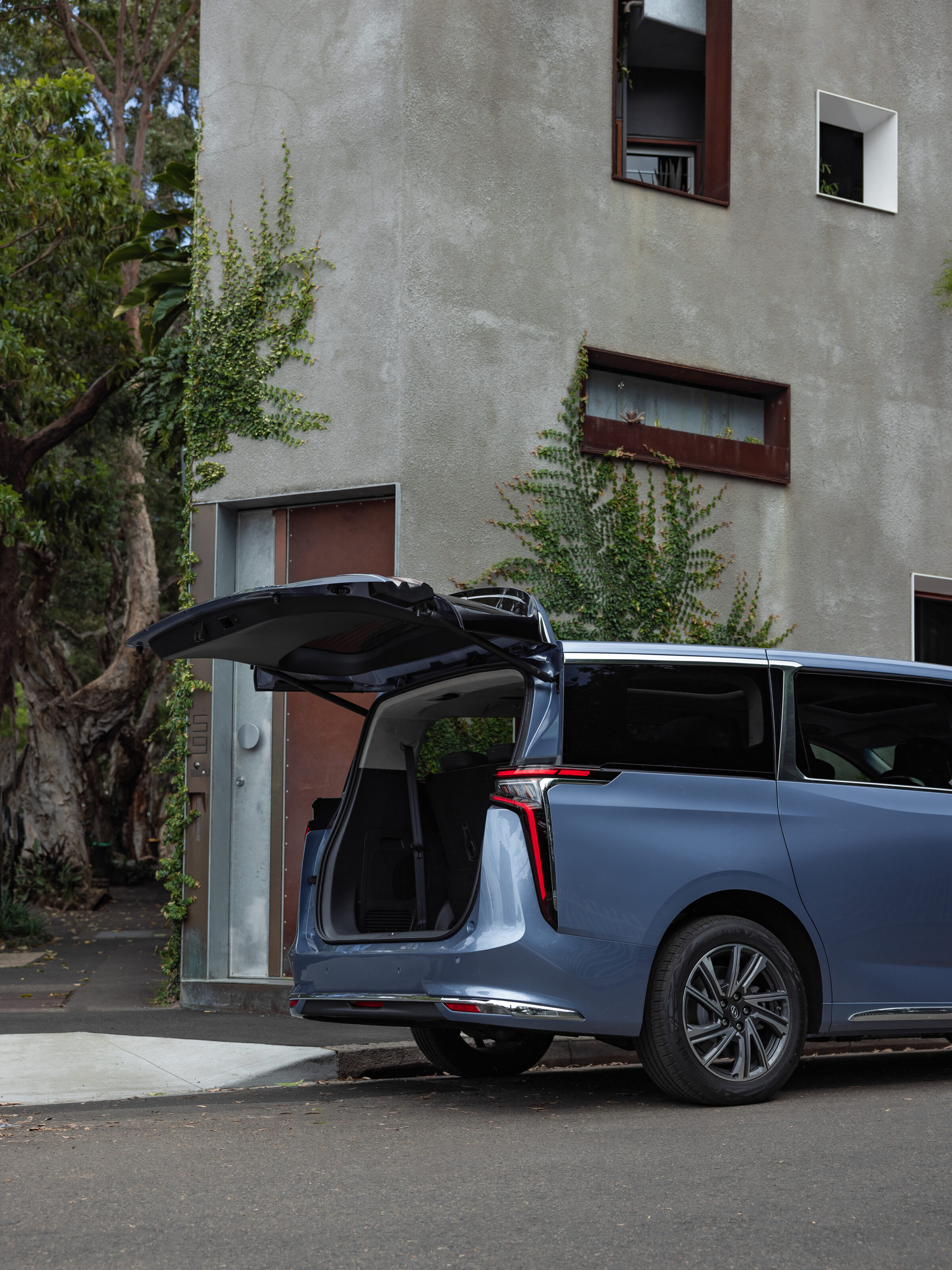
What’s it like to drive?
Our time behind the wheel of the Mifa 9 was brief, but we were fairly impressed with the road manners of LDV’s people mover.
Slip inside and you’ll discover there’s no starter button. Instead, just like a Tesla or a Polestar, the Mifa 9 recognises when the key is in the car and is ready to roll once you select Drive.
Acceleration is swift and effortless, despite the hefty kerb weight – at circa-2500kg the Mifa 9 is around 300kg heavier than a petrol-powered Mifa – and the cabin is impressively quiet and refined. Ride comfort is also decent thanks to a chassis set-up that clearly favours comfort and compliance over control.
Small bumps and surface imperfections are mostly ironed out by the 19-inch alloys and, through quicker corners, there’s a welcome degree of grip and composure, something no doubt helped by high-quality Continental Eco Contact 6 tyres.
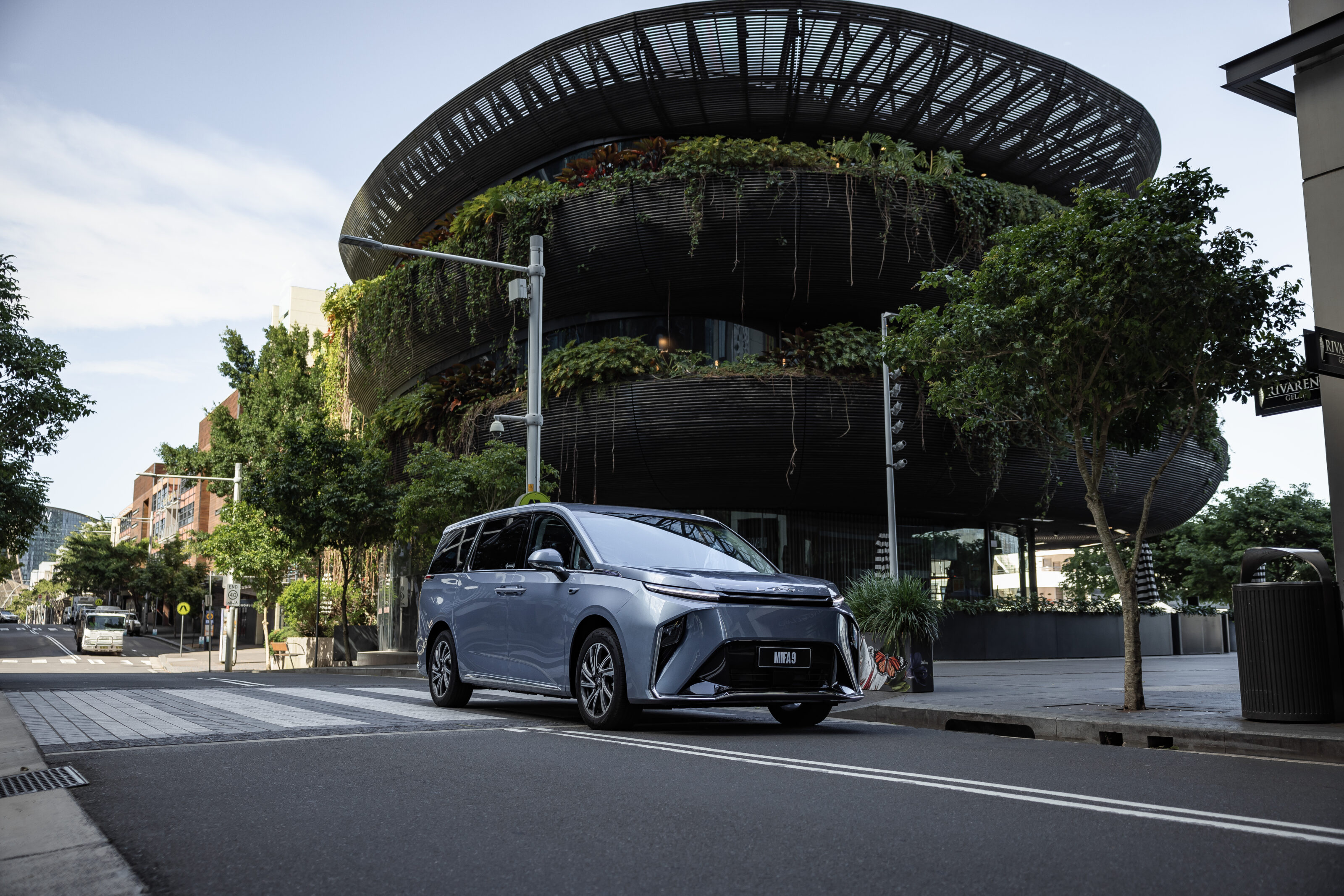
Things do get scrappy if you push the Mifa 9 beyond seven-tenths or so where you’ll encounter occasional torque steer, heavy-handed stability and traction control systems and a body that struggles to contain its mass during quicker changes of direction. But given most Mifa 9s will be used to ferry people about in cities and on the freeway, the dynamics are nicely judged.
Its steering is light, vision out is excellent and the benefits of the Mifa 9’s younger platform and fresh powertrain tech are obvious. This is easily the best LDV product we’ve driven.
Where the eT60 ute and eDeliver 9 feel quite utilitarian, the Mifa 9 has a degree of dynamic cohesion and polish that’s largely been missing from LDV’s wider portfolio. The downside is you have to pay handsomely to get it.
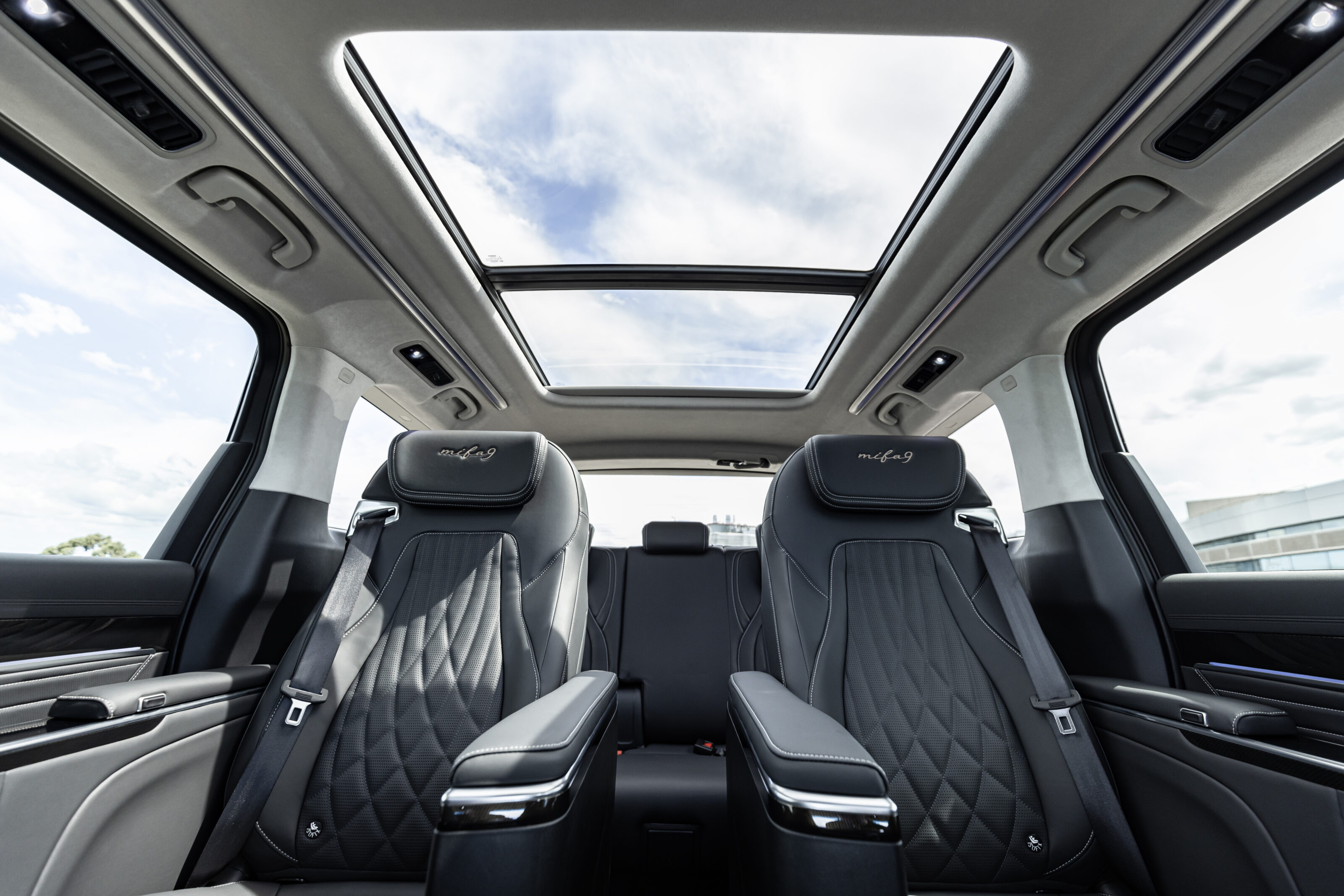
How efficient is it?
LDV says the Mifa 9 will chew through electrons at a rate between 21.3kWh and 21.8kWh depending on which variant you choose.
The lighter Mode trim grade offers the best consumption claim, while the heavier Executive and Luxe models are slightly hungrier.
Those consumption figures are based on the stricter WLTP test cycle so you can hope to get relatively close to them in the real world. However, we doubt you’ll achieve anything close to those numbers if you load up your Mifa 9 with seven people and their luggage.
Still, in ideal conditions, LDV says the Mifa 9 has a maximum claimed driving range of 440km.
As for charging, the Mifa 9 accepts up to 120kW DC fast charging and if you can find a charger fast enough it can achieve a 30-80 per cent charge in around 36 minutes.
On an 11kW AC charger, like the type found in most public car parks or via a three-phase outlet at home, a 5-100 per cent charge will take about 8.5 hours.
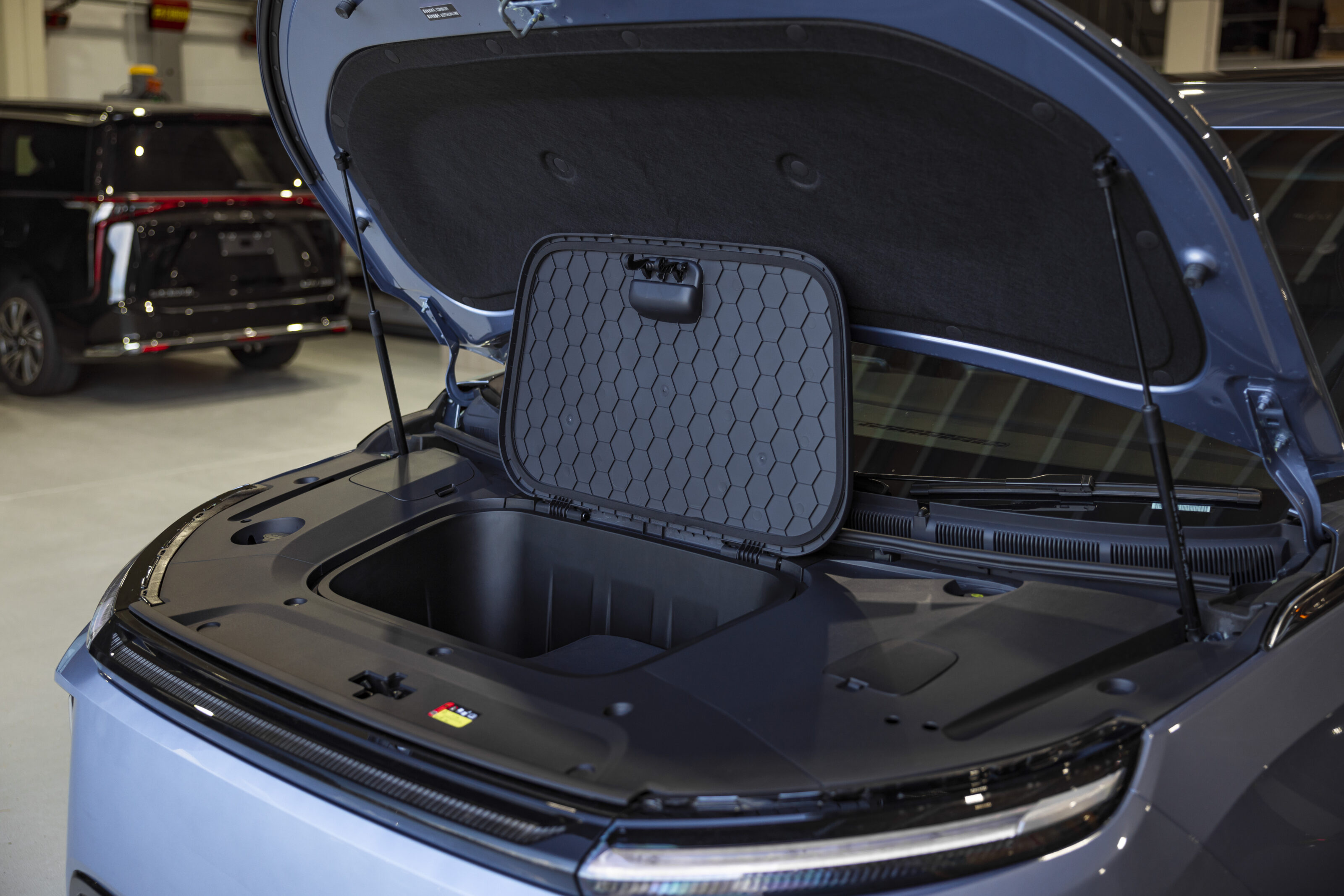
How safe is it?
The Mifa 9 was awarded a maximum five-star safety rating by ANCAP in late 2022. It received a 93 per cent rating for adult occupant protection, 88 per cent for child occupants, and 73 per cent for vulnerable road users.
Eight airbags are fitted as standard across the range and every variant includes the following safety equipment:
| Auto emergency braking (vehicle, pedestrian, cyclist, reverse) | Lane-keep assist |
| Adaptive cruise control | Rear collision warning |
| Blind-spot alert | Rear cross-traffic alert |
| Door opening warning | Rear occupant alert |
| Lane departure warning | Traffic sign recognition |
Warranty and running costs
Just like its high price, the Mifa 9’s warranty is a little disappointing.
Unlike petrol-powered versions of the Mifa which carry a seven-year/200,000km warranty, the electric Mifa 9 is only covered for a five-year/200,000km period.
The battery itself is covered for eight years or 200,000km, however, and LDV guarantees the Mifa 9 will retain at least 70 per cent of its 90kWh battery capacity within that time.
Service intervals are impressively long at every two years or 30,000km and each visit to the dealer will cost around $220-$520.
Five years of free roadside assistance is also included.
VERDICT
So, should you buy a Mifa 9? On many levels, it’s a pretty convincing people mover.
It offers plenty of space and luxury, its electric powertrain is swift and silent and the fresh cabin design and opulent mix of materials are impressively premium.
Even better news is that it’s also decent to drive, providing you stay within the scope of its use case as a people mover. An engaging vehicle for a backroad blast this is not.
As for which trim level is the most attractive, we’d suggest going for the mid-spec Executive or flagship Luxe. The base car’s manual seats, plastic steering wheel and manual tailgate fall short of the kind of experience and ease of use you’d expect from a six-figure people mover.
But there’s no escaping the fact that its high price puts the Mifa 9 out of reach of all but the most well-heeled private buyers. Is the Mifa 9 worth twice as much as a flagship Kia Carnival Platinum? Absolutely not.
LDV admits the target market for the Mifa 9 is mostly commercial enterprises like hotels or chauffeur services that are keen to meet emissions targets and take advantage of tax incentives. And for those entities, it makes more sense.
While it might be a tough sell for most of us, the real positive with the Mifa 9 is it gives us a glimpse at what LDV has in the pipeline. It’s our first taste of the Chinese brand’s next-gen electric powertrains and platform, and it offers an impressive step forward.
| 2023 LDV Mifa 9 Executive specifications | |
|---|---|
| Body | 5-door, 7-seat people mover |
| Drive | front-wheel |
| Battery | 90kWh lithium-ion |
| Motor | 1 x front axle |
| Power | 180kW |
| Torque | 350Nm |
| Transmission | single-speed reduction gear |
| Weight | 2535kg |
| Fuel consumption | 21.5kW/100km |
| Range | 430km (WLTP) |
| Front suspension | double A-arms, coil springs, anti-roll bar |
| Rear suspension | multi-links, coil springs, anti-roll bar |
| L/W/H | 5270/2000/1840mm |
| Wheelbase | 3200mm |
| Boot space (behind 3rd row/2nd row/all seats flat) | 466/1703/2017L |
| Wheels | 19-inch alloy |
| Price | $117,000 + on-road costs |
Score breakdown
Things we like
- Eye-catching design
- Cabin design is minimalist, modern and properly opulent
- Decent dynamics and 440km range
- Swift and silent EV performance
Not so much
- You could buy two top-spec Kia Carnivals for the same money
- Too many functions buried in central screen + no Android Auto
- Some interior fit and finish pretty average
- Shorter warranty period than petrol versions of the Mifa
We recommend
-
 News
News2023 LDV Mifa 9 EV pricing and features
The all-electric LDV Mifa 9 people-mover has arrived in Australia
-
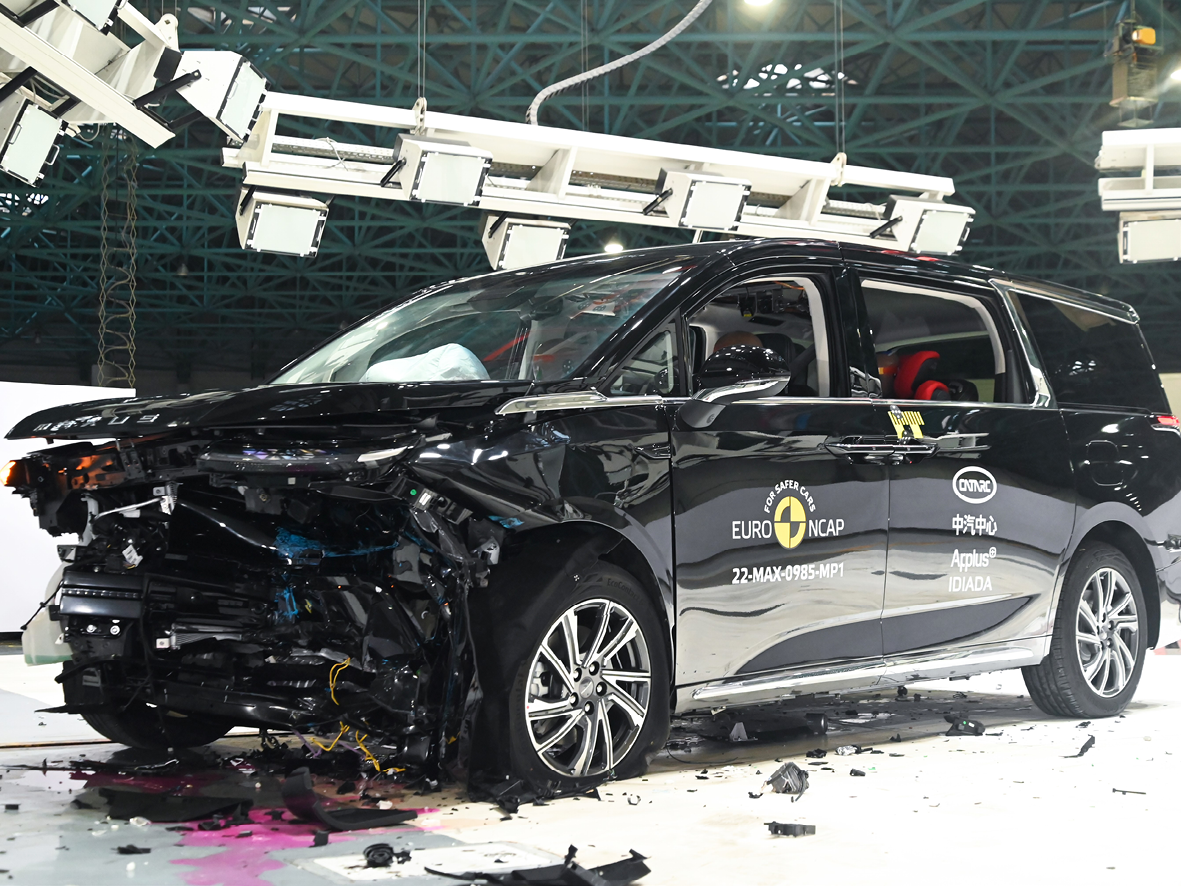 News
News2023 LDV Mifa 9 EV people-mover receives five-star ANCAP safety rating
ANCAP has rated the Mifa 9 electric people-mover the full five-stars, but not the petrol-powered Mifa
-
 News
News2025 New Car Calendar: All the new cars coming to Australia
Take a look at our list of what is expected to launch in Australia in 2025 – plus those we might not see locally just yet





